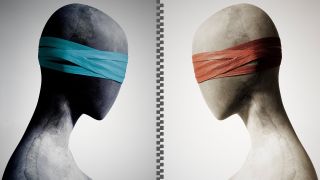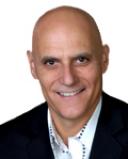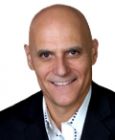Psychiatry
Mental Health Care Is Broken—Here’s How We Fix It
Empowering therapists with client-centered solutions.
Posted November 21, 2023 Reviewed by Lybi Ma
Key points
- Instead of treating living people, mental health care is overly focused on pushing them into boxes.
- We need a paradigm shift that places humanity at the forefront of mental health care.
- Through recent advances, we can track processes of change much more easily, evaluate them more effectively.

A good therapist treats each client as an individual and considers how their life unfolds over time. Our scientific models, however, encourage practitioners to focus in an entirely different direction. Rather than treating actual living people, classification systems like the Diagnostic and Statistical Manual of the American Psychiatric Association (DSM) tell therapists instead to treat “disorders.”
A recently published study shows the absurdity of it all.1 Researchers calculated how many combinations of signs and symptoms are supposed to guide mental health practitioners in finding the diseases that supposedly underlie DSM disorders. So, how many unique combinations are there? How many combinations are practitioners supposed to track?
The answer is ridiculous. There are 10,130,814 ways to be diagnosed with a mental illness using the current DSM criteria. When “specifiers” are added—the extensions to a diagnosis that further clarify a client's disorder—that number balloons to 161 septillion unique diagnostic presentations. The purpose of it all is to find the underlying disease. How many latent diseases have been found so far in the more than half a century we have been rummaging through these millions or septillions of combinations?
Zero. Not one.
But at least the categories tell you how best to change a given person’s life, right? No. The work group responsible for the latest edition of the DSM made it clear that the system does not claim to have this utility.2 If found, mental diseases would be functional and very useful because that term only applies if types of suffering have a known cause, course, and response to treatment. The DSM was a possible strategy for someday finding such things—but it failed. What we are left with is an empty ritual that does not guide professionals to more effective outcomes.
Understanding Your Clients Better Than They Do Themselves
Here's a quick experiment. Stand up, and lift one foot, so that you are balancing on one leg. Easy enough, but now close your eyes and observe what happens. Most likely, you will immediately tip over.
We need feedback for even the most mundane activities, and this is especially true for your work with clients. Rather than just relying on your experience and what you can sense intuitively about your clients’ progress, you need a scientific approach that is focused on their processes, and how they link to desired outcomes.
There is only one known way to do so, and it is the scientific equivalent of what you already do naturally as a practitioner. Look at the person as an evolving whole over time. Gather a wide range of relevant information and model how it relates to the person’s goals. Identify patterns, and then use the person’s strengths to target and disrupt key blockages.
You do it intuitively. The DSM ignores it. But now through modern methods and what we call idionomic statistical modeling, the tools have arrived to help you make better decisions in your work with clients, informed by real-time data, person by person. Instead of using artificial intelligence to replace caring professionals, we can use it to empower them.
What you can learn this way is much more detailed, more personalized, and more coherent than any DSM diagnosis could ever be. For instance, you might learn that whenever a client focuses on their outer appearance, they start feeling self-conscious, which makes them withdraw from social outings. Simultaneously, you might learn that when they instead focus on their personal goals and values, they can engage with other people more easily. Bit by bit, through continuous tracking of your client’s biopsychosocial processes, you get a clearer picture of what holds this particular person down and how to lift them up.
Revolutionizing Mental Health Care
Being an effective therapist is often less about giving well-intentioned advice, and more about watching, listening, and making sense of it all. In the past, that meant tracking data intuitively and relying on experience and the artful application of principles. But through recent technological advances, we can track processes of change much more easily, evaluate them more effectively, and let science do some of the heavy lifting.
This process can be accelerated even further. My team and I have been working on a new app for the past three years. And, in combination with other technological advances, this may well be the beginning of a change that might revolutionize the entire mental health care system. Such technology may allow you to track your clients’ bio-psychosocial processes and relate them to desired outcomes. In short, with this applied science you can help your clients make effective changes in a more personalized way than ever before. This could be a true game-changer.
Whenever you are feeling stuck with a client, chances are, there is an interplay of factors at hand that you do not yet fully understand. Rather than pressing on, this is a time to pause, reflect, and review, and maybe change your approach. With more information, you can let data science help identify the critical factors in your client’s life, see how they relate to each other, and suggest how best to empower your client in a personalized way. It’s like opening your eyes as you stand on one foot. And with that feedback, a very difficult task suddenly becomes a heck of a lot easier.
References
See PsychFlex for more information.
Borgogna, N. C., Owen, T., & Aita, S. L. (2023). The absurdity of the latent disease model in mental health: 10,130,814 ways to have a DSM-5-TR psychological disorder. Journal of Mental Health, 1-9. Doi: 10.1080/09638237.2023.2278107
Kupfer, D. J., First, M. B., & Regier, D. A. (2002). A research agenda for DSM V. Washington, D.C.: American Psychiatric Association.




